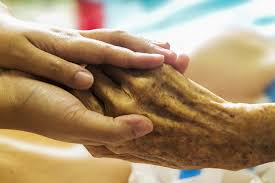Why don’t people care any more?

It’s a decades-old puzzle: Human beings are noted for incredible acts of heroism, kindness and generosity, yet we’re also known for selfish, self-centered actions and the capability to seemingly ignore evil as it occurs around us. Sociologists debate the answer, ethicists explain the issue and we just accept it and move on, certain in our hearts that we would never do such a thing. Each of us are, of course, individually better than humanity as a mass. We each consider ourselves ‘above average’ in our compassion, certainly better than ‘them’.
What does this have to do with communication? Your mission is to garner understanding and acceptance, both which require stakeholder engagement. Engagement is the secret sauce that makes us compassionate. Compassion is a by-product of engagement; once we engage with another person, we will help them, protect them, or rescue them.
This noble, real human dynamic is at risk from a new and subtle foe; self-publishing. When we tweet, post or Instagram we are practicing self-publication. At that point we see ourselves as ‘the news’, as the media. And with this self-assumed position, we become non-compassionate. Not less compassionate, as we all consider ourselves to be caring people, but non-compassionate. We choose not to respond to what we are reporting. We do this because we have been taught ‘media’ is above the fray of care and compassion, dispassionately reporting the facts without becoming involved in the story. We innately believe and accept that we will break our ‘journalistic integrity’ if we allow a story to impact us.
There is a reporting discipline in journalism that is substantially enforced within professional media: Don’t become involved in the story you’re telling! There is an objectivity gained from non-involvement that preserves the integrity of the media. Hence media outlets give us news clips of evacuated residents searching for water after a hurricane, but we don’t see news crews dispensing their personal water supply. We view people running from snipers but don’t expect members of the media to run out to shelter them. In fact, journalists who do ‘get involved’ in their story often have their professionalism questioned. Any individual who turns on their cell phone camera intrinsically shares in this mindset: There is a fundamental difference between recording and responding.
As a communicator, you are probably already considering the impact of this new reality. When everyone is the media, nobody is the stakeholder:
- When everyone is reporting instead of viewing, who are you communicating to?
- When people are talking instead of listening, what can you say?
The ramifications of this in effective communication are large. How do we get people to listen to our story, understand our actions and support our efforts, if they aren’t listening? As communicators, we need to find ways to capture citizen journalists and turn them back into citizens. An issue becomes an issue because it impacts people, so we will always need to engage with our impacted stakeholders. We need to devise messages that pull them away from their platforms back into our community.
Some suggestions to bridge this compassion gap:
- Invite ‘citizen journalists’ to your party: Initiate opportunities for people to send you videos, photos, reports or suggestions. Share news releases with all who request them. Include them in media briefings, or offer an equivalent town hall meeting.
- Welcome them in: Like a good host, thank them for coming, praise them for what they brought, and feature their gifts as important and appropriate.
- Engage them in the discussion: Get them talking with you, invite them to join your ongoing conversation about the response.
- Help them report: Offer them new information, images or people to talk with.
- Ask them what they think: Pull them into the conversation that leads to understanding. Use surveys, acknowledge key questions, meet in small groups.
- Be real: Speak truth. Personalize events’ impacts and actions’ benefits. Don’t be afraid to express dismay at what has happened. Offer condolences for losses.
- Say you’re sorry! Expressing sorrow is not the same as accepting responsibility. We expect too much of ‘I’m sorry’ when we’re a perpetrator, but too little of ‘I’m sorry’ when we’re the participant.
- Invite them back: Develop long-term interaction for future conversations and reporting. Pull them in to the communication cycle. Sow to their interest in the event and reap their investment in the response.
At the end of the day…
Capture, captivate and convert your ‘citizen journalists’ by being as personable, engaged and involved as you want them to be. Geography says they’re impacted citizens before they are professional journalists. They are more impacted than they say or post. Give them the respect and ownership they need to accept, hear and understand your message.
If engagement is the secret sauce of compassion and caring, aim at engagement and assume caring will follow.
Every incident brings upheaval, fear, inconvenience and often actual harm. No response effort can effectively meet every need of impacted stakeholders. We can hand out dollars all day, but the cost of doubt, fear, anger or outrage is higher than we can pay. The Social License to Operate highway may be paved with dollars, but it is open to traffic when the affected community embraces your activities. All the money in the world won’t buy respect or trust. Only engagement will. Take the effort to engage your ‘citizen journalists’ so they can help tell your story.
Interested in more information? Contact me!
Related article: A Brave New World – Lessons for Communications